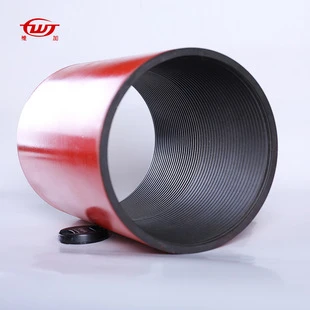- Afrikaans
- Albanian
- Amharic
- Arabic
- Armenian
- Azerbaijani
- Basque
- Belarusian
- Bengali
- Bosnian
- Bulgarian
- Catalan
- Cebuano
- Corsican
- Croatian
- Czech
- Danish
- Dutch
- English
- Esperanto
- Estonian
- Finnish
- French
- Frisian
- Galician
- Georgian
- German
- Greek
- Gujarati
- Haitian Creole
- hausa
- hawaiian
- Hebrew
- Hindi
- Miao
- Hungarian
- Icelandic
- igbo
- Indonesian
- irish
- Italian
- Japanese
- Javanese
- Kannada
- kazakh
- Khmer
- Rwandese
- Korean
- Kurdish
- Kyrgyz
- Lao
- Latin
- Latvian
- Lithuanian
- Luxembourgish
- Macedonian
- Malgashi
- Malay
- Malayalam
- Maltese
- Maori
- Marathi
- Mongolian
- Myanmar
- Nepali
- Norwegian
- Norwegian
- Occitan
- Pashto
- Persian
- Polish
- Portuguese
- Punjabi
- Romanian
- Russian
- Samoan
- Scottish Gaelic
- Serbian
- Sesotho
- Shona
- Sindhi
- Sinhala
- Slovak
- Slovenian
- Somali
- Spanish
- Sundanese
- Swahili
- Swedish
- Tagalog
- Tajik
- Tamil
- Tatar
- Telugu
- Thai
- Turkish
- Turkmen
- Ukrainian
- Urdu
- Uighur
- Uzbek
- Vietnamese
- Welsh
- Bantu
- Yiddish
- Yoruba
- Zulu
casing collar
Understanding Casing Collars in Oil and Gas Operations
In the oil and gas industry, the integrity of well structures is paramount to ensure safe and efficient extraction processes. One critical component in maintaining this integrity is the casing collar. Casing collars are essential elements in the construction of wells, playing a vital role in providing support, stability, and pressure containment in the various environments encountered during drilling.
A casing collar is a band or ring of steel that is specifically designed to connect sections of casing pipe in a well. The casing itself is tubular pipe that is inserted into a drilled well to maintain the well's integrity, preventing the collapse of the borehole and protecting both the environment and the wellbore from contamination. The casing collar typically features a thicker wall compared to standard casing segments, as it must withstand the additional stresses encountered during well operations.
The primary purpose of a casing collar is to connect different casing strings in a wellbore. This connection is crucial for several reasons. First, casing collars help to manage the pressure exerted on the wellbore during drilling and production phases. By ensuring a reliable connection, they prevent the risk of blowouts and other hazardous situations that could arise from pressure changes. Second, they provide a means for additional tools and equipment to be deployed downhole, including plugs, packers, and other completion tools.
When it comes to the installation of casing collars, precision is vital. They must be installed correctly to ensure a secure fit between casing sections. This typically involves the use of welding or mechanical methods, such as coupling or threading. The integrity of the connection is critical, as any flaws could lead to severe operational issues.
casing collar

Selection of appropriate casing collars involves consideration of several factors, including the depth of the well, the type of formation being drilled, and the anticipated pressure and temperature conditions. Engineers must choose materials that can withstand corrosive environments, high pressures, and extreme temperatures. Common materials used for casing collars include carbon steel, stainless steel, and other alloys designed to resist corrosion and mechanical fatigue.
In addition to their structural role, casing collars also serve as helpful markers during the drilling process. Each collar can be marked to indicate specific depths or zones within the well. This information is vital for operators to track the progress of drilling and to identify zones of interest for potential production.
Modern advancements in drilling technology have also influenced the design and application of casing collars. Innovations such as automated welding techniques and real-time monitoring systems facilitate better construction practices, enhancing the overall effectiveness of casing collars in well integrity management. These technological advancements help to minimize risks associated with drilling operations, resulting in safer and more efficient oil and gas extraction.
In conclusion, casing collars are a fundamental aspect of drilling and production operations in the oil and gas industry. Their ability to connect casing strings securely, manage pressure, and facilitate equipment deployment signifies their importance in maintaining wellbore integrity. As technology continues to evolve, the design and application of casing collars will likely become even more sophisticated, supporting the industry's ongoing commitment to safety and efficiency. Understanding their role and ensuring their proper use is essential for successful oil and gas operations.
-
Tubing Pup Joints: Essential Components for Oil and Gas OperationsNewsJul.10,2025
-
Pup Joints: Essential Components for Reliable Drilling OperationsNewsJul.10,2025
-
Pipe Couplings: Connecting Your World EfficientlyNewsJul.10,2025
-
Mastering Oilfield Operations with Quality Tubing and CasingNewsJul.10,2025
-
High-Quality Casing Couplings for Every NeedNewsJul.10,2025
-
Boost Your Drilling Efficiency with Premium Crossover Tools & Seating NipplesNewsJul.10,2025







